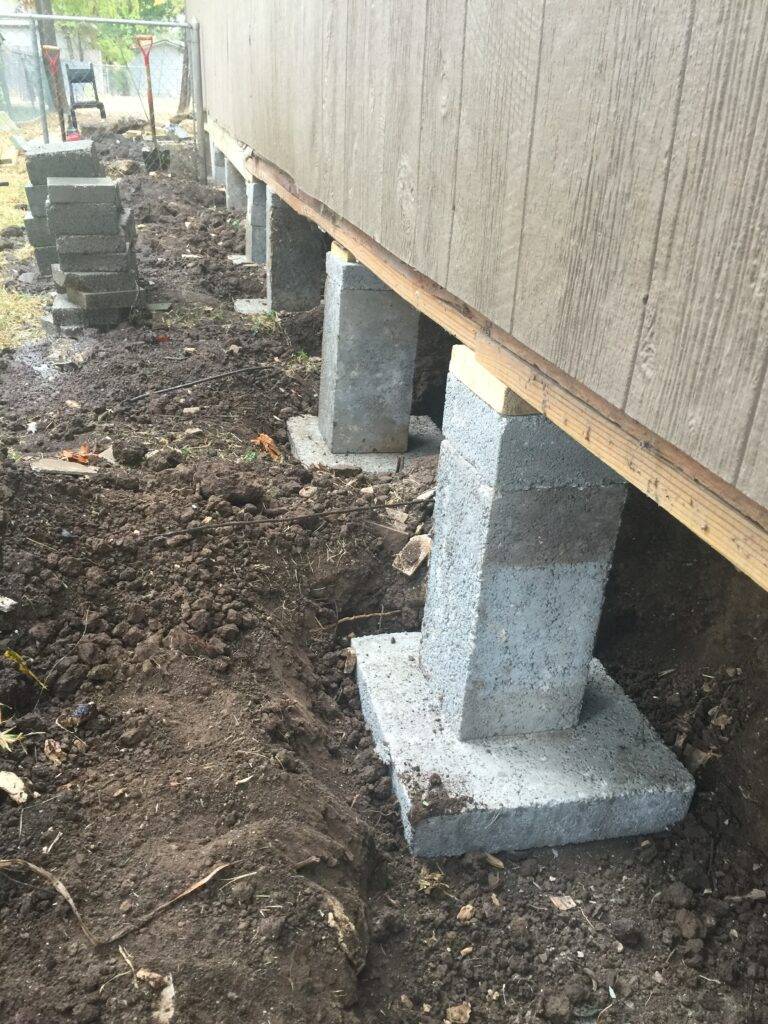Introduction to Pier and Beam Homes
Pier and beam homes have long been a popular choice for homeowners, offering a solid and reliable foundation for various building types. A key feature of these homes is the use of perimeter concrete block piers, which provide added stability and durability compared to older building methods and materials. But what makes these piers so crucial for the success of a pier and beam home? In this article, we’ll delve into the benefits of perimeter concrete block piers, focusing on their strength, ease of adjustment in case of foundation issues, and comparison to alternative materials such as cinderblocks and wood piers.

The Strength of Concrete Block Piers
One of the main advantages of concrete block piers is their inherent strength. These piers are built using solid concrete blocks, which are known for their excellent load-bearing capacity and resistance to wear and tear. This means that the foundation can support heavier loads and withstand harsh environmental conditions, ensuring a long-lasting, stable base for the home.
Advantages of Perimeter Concrete Block Piers
Perimeter concrete block piers are a key component of pier and beam homes, offering a number of significant benefits:
- Improved stability: These piers provide excellent support for the beams, ensuring that the home remains stable and secure over time.
- Resistance to soil movement: Homes built on perimeter concrete block piers are less susceptible to damage from shifting soils, a common issue in many regions.
- Ease of access: The crawl space created by pier and beam homes allows for easy access to utilities and maintenance tasks.
- Cost-effectiveness: Pier and beam foundations with perimeter concrete block piers are typically more affordable than other foundation types, making them an attractive option for budget-conscious homeowners.
Comparing Concrete Block Piers to Other Materials
To further understand the advantages of concrete block piers, it’s helpful to compare them to alternative materials such as cinderblocks and wood piers.
Cinderblocks
Cinderblocks, or hollow concrete blocks, are often used in construction due to their lightweight nature and affordability. However, they lack the strength and load-bearing capacity of solid concrete block piers. While cinderblocks may be suitable for certain applications, they are not ideal for supporting the weight of a pier and beam home. Concrete block piers, on the other hand, provide the necessary strength and stability for such homes.
Wood Piers and Posts
Wood piers and posts are another common alternative for pier and beam foundations. While wood can provide adequate support for some structures, it is susceptible to decay, termite damage, and moisture-related issues. In contrast, concrete block piers are resistant to these problems, ensuring a long-lasting and low-maintenance foundation for the home.
Maintaining Perimeter Concrete Block Piers
While perimeter concrete block piers are known for their durability, it’s important to keep an eye on their condition and perform regular maintenance. Some tips for maintaining your pier and beam foundation include:
- Inspect the piers for signs of cracking or shifting, which could indicate potential issues with the foundation.
- Ensure proper drainage around the foundation to prevent water from pooling and causing damage to the piers and beams.
- Regularly check the crawl space for signs of moisture or pest infestations, addressing any issues promptly to protect the integrity of the foundation.
- Schedule routine professional inspections of your pier and beam foundation to catch any potential issues before they become major problems.
Signs of Foundation Issues in Perimeter Concrete Block Piers
Detecting foundation problems early is crucial for maintaining your pier and beam home’s structural integrity and your concrete block piers. Here are three key signs of issues related to perimeter concrete block piers:
Leaning Piers
Leaning piers can result from soil movement, erosion, or improper installation, compromising the foundation’s stability. If you notice leaning piers, consult a foundation repair expert to assess and address the problem.
Broken Piers
Broken piers, caused by factors such as excessive weight or improper construction, pose a risk to the foundation’s stability. If you observe broken piers, seek professional assistance immediately to prevent further damage.
Misaligned Piers
Misaligned piers create uneven weight distribution, leading to the foundation shifting or settling. If you suspect misaligned piers, consult with a foundation repair specialist for evaluation and recommended action.
Conclusion
In conclusion, perimeter concrete block piers provide pier and beam homes with a strong, adaptable, and durable foundation. Their superior load-bearing capacity, ease of adjustment, and longevity make them the ideal choice compared to alternatives like cinderblocks and wood piers. By opting for concrete block piers, homeowners can ensure a secure and lasting foundation for their investment. Resolve slab foundation leaks with professional repair services. Safeguard your property and prevent water damage – schedule your repair today!